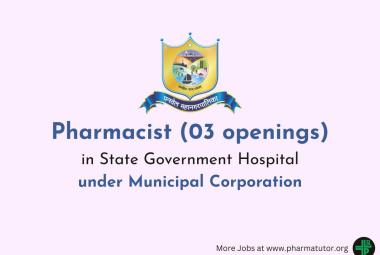Asthma
PHARMACOTHERAPY
Long-term control medications
In most cases, these medications need to be taken every day. Types of long-term control medications include:
Ø Inhaled corticosteroids
Ø Long-acting beta-2 agonists
Ø Leukotriene
Ø Theophylline
Quick-relief medications
These are also known as rescue medications, quick-relief medications are needed for rapid, short-term relief of symptoms during an asthma attack, or before exercise,
Ø Short-acting beta-2 agonists
Ø Ipratropium
Ø Oral and intravenous corticosteroids
Allergy-induced asthma.
These decrease your body's sensitivity to a particular allergen or prevent your immune system from reacting to allergens. Allergy treatments for asthma include:
Ø Immunotherapy
Ø Anti-IgE monoclonal antibodies
β2-Agonists
The short-acting β2-agonists are the most effective bronchodilators available. β2-Adrenergic receptor stimulation activates adenyl cyclase, which produces an increase in intracellular cyclic adenosine monophosphate. This results in smooth muscle relaxation, mast cell membrane stabilization, and skeletal muscle stimulation. Aerosol administration enhances bronchoselectivity and provides a more rapid response and greater protection against provocations that induce bronchospasm (e.g., exercise, allergen challenges) than does systemic administration.
Ø Albuterol and other inhaled short-acting selective β 2 agonists are indicated for treatment of intermittent episodes of bronchospasm and are the first treatment of choice for acute severe asthma and EIB. Regular treatment (four times daily) does not improve symptom control over as-needed use.
Ø Formoterol and salmeterol are inhaled long-acting β2 agonists indicated as adjunctive long-term control for patients with symptoms who are already on low to medium doses of inhaled corticosteroids prior to advancing to medium- or high-dose inhaled corticosteroids. Short-acting β2 –agonists should be continued for acute exacerbations. Long-acting agents are ineffective for acute severe asthma because it can take up to 20 minutes for onset and 1 to 4 hours for maximum bronchodilation after inhalation.
Ø In acute severe asthma, continuous nebulization of short-acting β2 agonists (e.g., albuterol) is recommended for patients having an unsatisfactory response after three doses (every 20 minutes) of aerosolized β2-agonists and potentially for patients presenting initially with PEF or FEV1 values <30% of predicted normal.
Ø Inhaled β2 -agonists agents are the treatment of choice for EIB. Short-acting agents provide complete protection for at least 2 hours after inhalation; long-acting agents provide significant protection for 8 to 12 hours initially, but the duration decreases with chronic regular use.
Ø In nocturnal asthma, long-acting inhaled β2-agonists are preferred over oral sustained-release β2 -agonists or sustained-release theophylline. However, nocturnal asthma may be an indicator of inadequate anti-inflammatory treatment.
Corticosteroids
Corticosteroids increase the number of β2-adrenergic receptors and improve receptor responsiveness to β2-adrenergic stimulation, thereby reducing mucus production and hypersecretion, reducing BHR, and reducing airway edema and exudation. Inhaled corticosteroids are the preferred long-term control therapy for persistent asthma in all patients because of their potency and consistent effectiveness; they are also the only therapy shown to reduce the risk of death from asthma. Most patients with moderate disease can be controlled with twice-daily dosing; some products have once-daily dosing indications. Patients with more severe disease require multiple daily dosing. Because the inflammatory response of asthma inhibits steroid receptor binding, patients should be started on higher and more frequent doses and then tapered down once control has been achieved. The response to inhaled corticosteroids is delayed; symptoms improve in most patients within the first 1 to 2 weeks and reach maximum improvement in 4 to 8 weeks. Maximum improvement in FEV1 and PEF rates may require 3 to 6 weeks.
Systemic toxicity of inhaled corticosteroids is minimal with low to moderate inhaled doses, but the risk of systemic effects increases with high doses. Local adverse effects include dose-dependent oropharyngeal candidiasis and dysphonia, which can be reduced by the use of a spacer device. The ability of spacer devices to enhance lung delivery is inconsistent and should not be relied on.
Systemic corticosteroids are indicated in all patients with acute severe asthma not responding completely to initial inhaled β2- agonist administration (every 20 minutes for three to four doses). Prednisone, 1 to 2 mg/kg/day (up to 40 to 60 mg/day), is administered orally in two divided doses for 3 to 10 days. Because short-term (1 to 2 weeks), high-dose systemic steroids do not produce serious toxicities, the ideal method is to use a short burst and then maintain the patient on appropriate long-term control therapy with inhaled corticosteroids.
In patients who require chronic systemic corticosteroids for asthma control, the lowest possible dose should be used. Toxicities may be decreased by alternate-day therapy or high-dose inhaled corticosteroids.
Methylxanthines
Ø Theophylline appears to produce bronchodilation by inhibiting phosphodiesterases, which may also result in antiinflammatory and other nonbronchodilator activity through decreased mast cell mediator release, decreased eosinophil basic protein release, decreased T-lymphocyte proliferation, decreased T-cell cytokine release, and decreased plasma exudation.
Ø Methylxanthines are ineffective by aerosol and must be taken systemically (orally or IV). Sustained-release theophylline is the preferred oral preparation, whereas its complex with ethylenediamine (aminophylline) is the preferred parenteral product due to increased solubility. IV theophylline is also available.
Ø Theophylline is eliminated primarily by metabolism via hepatic cytochrome P450 mixed-function oxidase microsomal enzymes (primarily CYP1A2 and CYP3A4) with 10% or less excreted unchanged in the kidney. The hepatic cytochrome P450 enzymes are susceptible to induction and inhibition by various environmental factors and drugs. Clinically significant reductions in clearance can result from cotherapy with cimetidine, erythromycin, clarithromycin, allopurinol, propranolol, ciprofloxacin, interferon, ticlopidine, zileuton, and other drugs. Some substances that enhance clearance include rifampin, carbamazepine, phenobarbital, phenytoin, charcoal-broiled meat, and cigarette smoking.
Ø Because of large interpatient variability in theophylline clearance, routine monitoring of serum theophylline concentrations is essential for safe and effective use. A steady-state range of 5 to 15 mcg/mL is effective and safe for most patients.
Ø Sustained-release oral preparations are favored for outpatient therapy, but each product has different release characteristics and some products are susceptible to altered absorption from food or gastric pH changes. Preparations unaffected by food that can be administered a minimum of every 12 hours in most patients are preferable.
Ø Adverse effects include nausea, vomiting, tachycardia, jitteriness, and difficulty sleeping; more severe toxicities include cardiac tachyarrhythmias and seizures.
Ø Sustained-release theophylline is less effective than inhaled corticosteroids and no more effective than oral sustained-release β2-agonists, cromolyn, or leukotriene antagonists
Ø The addition of theophylline to optimal inhaled corticosteroids is similar to doubling the dose of the inhaled corticosteroid and is less effective overall than the long-acting β2-agonists as adjunctive therapy.
Anticholinergics
Ø Ipratropium bromide and tiotropium bromide are competitive inhibitors of muscarinic receptors; they produce bronchodilation only in cholinergic mediated bronchoconstriction. Anticholinergics are effective bronchodilators but are not as potent as β2-agonists. They attenuate, but do not block, allergen- or exercise-induced asthma in a dose-dependent fashion.
Ø The time to reach maximum bronchodilation from aerosolized ipratropium is longer than from aerosolized short-acting β2-agonists (30 to 60 minutes vs. 5 to 10 minutes). This is of little clinical consequence because some bronchodilation is seen within 30 seconds and 50% of maximum response occurs within 3 minutes. Ipratropium bromide has a duration of action of 4 to 8 hours; tiotropium bromide has a duration of 24 hours.
Ø Inhaled ipratropium bromide is only indicated as adjunctive therapy in severe acute asthma not completely responsive to β2-agonists alone because it does not improve outcomes in chronic asthma. Tiotropium bromide has not been studied in asthma.
Mast Cell Stabilizers
Ø Cromolyn sodium and nedocromil sodium have beneficial effects that are believed to result from stabilization of mast cell membranes. They inhibit the response to allergen challenge as well as EIB but do not cause bronchodilation.
Ø These agents are effective only by inhalation and are available as metered- dose inhalers; cromolyn also comes as a nebulizer solution.
Ø Both drugs are remarkably nontoxic. Cough and wheezing have been reported after inhalation of each agent, and bad taste and headache after nedocromil.
Ø Cromolyn and nedocromil are indicated for the prophylaxis of mild persistent asthma in children and adults regardless of etiology. Their effectiveness is comparable to theophylline or leukotriene antagonists for persistent asthma. Neither agent is as effective as inhaled corticosteroids for controlling persistent asthma. Neither is as effective as the inhaled β2- agonists for preventing EIB, but they can be used in conjunction for patients not responding completely to inhaled β2-agonists.
Ø Most patients experience improvement in 1 to 2 weeks, but it may take longer to achieve maximum benefit. Patients should initially receive cromolyn or nedocromil four times daily; after stabilization of symptoms the frequency may be reduced to two times daily for nedocromil and three times daily for cromolyn.
Leukotriene Modifiers
Ø Zafirlukast and montelukast are oral leukotriene receptor antagonists that reduce the proinflammatory (increased microvascular permeability and airway edema) and bronchoconstriction effects of leukotriene D4. In adults and children with persistent asthma, they improve pulmonary function tests, decrease nocturnal awakenings and β2-agonist use, and improve asthma symptoms. However, they are less effective in asthma than low-dose inhaled corticosteroids. They are not used to treat acute exacerbations and must be taken on a regular basis, even during symptom-free periods. The adult dose of zafirlukast is 20 mg twice daily, taken at least 1 hour before or 2 hours after meals; the dose for children aged 5 through 11 years is 10 mg twice daily. For montelukast, the adult dose is 10 mg once daily, taken in the evening without regard to food; the dose for children aged 6 to 14 years is one 5-mg chewable tablet daily in the evening.
Ø Zafirlukast and montelukast are generally well tolerated. Rare elevations in serum aminotransferase concentrations and clinical hepatitis have been reported. An idiosyncratic syndrome similar to the Churg-Strauss syndrome, with marked circulating eosinophilia, heart failure, and associated eosinophilic vasculitis, has been reported in a small number of patients; a direct causal association has not been established.
Ø Zileuton is an inhibitor of leukotriene synthesis. The dose of zileuton tablets is 600 mg four times daily with meals and at bedtime. The recommended dose of zileuton extended-release tablets is two 600-mg tablets twice daily, within 1 hour after morning and evening meals (total daily dose 2,400 mg).
Ø Use of zileuton is limited due to the potential for elevated hepatic enzymes (especially in the first 3 months of therapy), and inhibition of the metabolism of some drugs metabolized by CYP3A4 (e.g., theophylline, warfarin). Serum alanine aminotransferase should be monitored before treatment and then periodically thereafter.
Combination Controller Therapy
Ø The addition of a second long-term control medication to inhaled corticosteroid therapy is one recommended treatment option in moderate to severe persistent asthma.
Ø Single-inhaler combination products containing fluticasone propionate and salmeterol or budesonide and formoterol are currently available. The inhalers contain varied doses of the inhaled corticosteroid with a fixed dose of the long-acting β2-agonist. The addition of a long-acting β2-agonist allows a 50% reduction in inhaled corticosteroid dosage in most patients with persistent asthma. Combination therapy is more effective than higher-dose inhaled corticosteroids alone in reducing asthma exacerbations in patients with persistent asthma.
Ø Leukotriene receptor antagonists also are successful as additive therapy in patients inadequately controlled on inhaled corticosteroids alone and as corticosteroid-sparing therapy. However, the magnitude of these benefits is less than that reported with the addition of long-acting β2-agonists.
Omalizumab category
Ø Omalizumab is an anti-IgE antibody approved for the treatment of allergic asthma not well controlled by oral or inhaled corticosteroids.
Ø The dosage is determined by the patient’s baseline total serum IgE (international units/mL) and body weight (kg). Doses range from 150 to 375 mg given subcutaneously at either 2- or 4-week intervals. Because of its high cost, it is only indicated as step 5 or 6 care for patients who have allergies and severe persistent asthma that is inadequately controlled with the combination of high-dose inhaled corticosteroids and long-acting β2-agonists.
Because it is associated with a 0.1% incidence of anaphylaxis, patients should remain in the physician’s office for a reasonable period after the injection because 70% of reactions occur within 2 hours. Some reactions have occurred up to 24 hours after injection.
FIND MORE :-
| Pathology | Signs-Symptoms | Diagnosis |









